 A.J. Kaufmann – “Stoned Gypsy Wanderer” (Kendra Steiner Editions 2014, CDR/DL)
A.J. Kaufmann – “Stoned Gypsy Wanderer” (Kendra Steiner Editions 2014, CDR/DL)
I was introduced to the music of Polish musician, songwriter and poet A.J. Kaufmann in 2013 through Sauer Adler, his duo project with Kacper Wojaczek. I was impressed with their lo-fi yet rich and robust brand of 60s inspired Psychedelia, Prog-Psych and Folk-Psych, and their The Trips and Dreams of Stephen Adler album released earlier this year demonstrated a knack for fine songwriting and impressive instrumental arrangements.
A.J. recently sent me a package including his first solo album, the 2011 vinyl LP released Second Hand Man, several of his poetry chapbooks, and his latest album, Stoned Gypsy Wanderer. Both albums feature outstanding artwork by Justin Jackley, an Austin, Texas based artist whose work I’ve become increasingly familiar with over the past year (check him out at justinjackley.com)
A.J. currently has 15 albums available on his Bandcamp site, featuring music that ranges from stripped down Folk to music that is not unlike Sauer Adler, and Stoned Gypsy Wanderer will surely appeal to Sauer Adler fans. Like Sauer Adler, A.J.’s music has a lo-fi homemade feel, but he does so much with the tools at his disposal.
Several of the album’s 14 songs have a vocals and acoustic guitar driven acid-minstrel quality that reminds me of the Bevis Frond, though like Nik Saloman, A.J. has his own sound. Representative tunes include Amaranth Blues and the title track, plus the majestic C.O.K.E., with its screaming guitar, and I love the trippy, mind-bending effects that augment This is Not New York and Slavia Nova. There’s lot of variety too. I love the jangly yet endearingly dissonant Folk-Psych of Berger. Crown Of Things is a darkly Gothic, droning Acid-Pop song with lysergic guitar lines that weave a snake-like trail amongst the catchy melody. Wine Of Rape is a hauntingly seductive slab of Psychedelic Prog-Pop, with organ, piano and orchestration. There are also songs with a high energy rocking feel, and even some that are whimsically fun. Still Within gushes with spirited Psych infused Folk Rock and ripping electric guitar fills. A.J. goes totally trippy on the equally energetic Whispering Egypt, with its wildly wah’d freak guitar, haunting organ and spaced out mesmerizing vibe. I like the lively, Celtic tinged Veil Of Isis and the bouncy In a Blue and Violet Morning. Iceberg has a stoned, trippy, carnival-like rhythmic pulse, horn section, and jabbing keyboard notes. And Operation is the most different track of the set, having a quirky New Wav-ish rocking feel that reminded me of an early 80s Bill Nelson song. Stoned Gypsy Wanderer is a captivating set of songs which mine the Psychedelic, Folk and Prog realms and are then stamped with A.J.’s own personal touch.
Wanting to know more about A.J. and his background I conducted the following interview by email…
Aural Innovations (AI): Looking at the dates of the many albums available at Bandcamp it looks like you’ve been recording since 2009? Tell me about when and what inspired you to become a musician?
A.J. Kaufmann (A.J.): Well, me and my friend Mati were recording since we were kids really, since 2002. Back then we used to record bass, guitars and vocals live direct to tape in a high rise block apartment in Poznan, Poland. I think the influences have been primarily Black Sabbath, Hawkwind and Amon Duul II; also Manilla Road and other classic metal bands. Those tapes were awful in terms of our skills, performance and quality, though I still occasionally recycle those riffs, as heard in parts of the Stoned Gypsy Wanderer album. But yes, by myself, I started recording in 2009, demoing new and old songs. I always liked to write and make noise, since I was a kid. I think originally there hasn’t been a philosophy or particular reason to start writing and playing music. I just did various things with notebooks and guitars.
AI: Other than Sauer Adler and your solo work, have you been in any other bands? If so, what was the music like?
A.J.: Yes, I mentioned my early teens project with Mati. It was called Brain Salad first, later Strange World. Lots of noise. It lasted 2 years and we did seven C90 cassettes. Other than that I played in a local indie band called Orchid. The singer had a Patti Smith kind of vibe going on. And I think that’s all worth mentioning here – Strange World because it was the first project that performed original songs, and Orchid because it was cool playing live on the radio and in local clubs with them as a lead guitarist – my first gigs in that role. I don’t feel too good having to work with other people. I feel best working alone.
AI: Your music is difficult to neatly summarize, but seems to draw on a variety of Psychedelic, Folk and Prog influences. In some cases you sound like a coffee shop Folk singer, in others like an acid minstrel not unlike the Bevis Frond, and still others have a fuller Prog-Psych feel.
A.J.: Yes, I listen to everything really, and as Jerry Garcia once said about the Dead, I believe – “We’re clever thieves”. So, I try to “steal” the best from everything I like most and mix it together, get the best ideas for a sound, style or feeling. Coffee shop folk singer sounds closest to my soul, since when I lived in Berlin I used to perform at so called Liedermacher Nachte – Songwriter Nights. So an acid minstrel is also close to the feeling. Thinking psychedelic I love 13th Floor Elevators most, Guthrie and Dylan on the folk side, and I think Rush up to Moving Pictures has no rivals in the field of prog rock. My debut album has been distributed by Lynx Music which deals with art rock primarily, so I was surprised that the local art rock press actually not only was interested in, but also liked an album I consider pop.
AI: Continuing on the theme of influences, the only analogies to other artists I made in the Sauer Adler reviews was Syd Barrett and Peter Hammill. Anything to that? I’ll add that Operation from Stoned Gypsy Wanderer strikes me as having an early 80s Bill Nelson feel.
A.J.: I had to look up Bill Nelson, and then laughed cause last year I bought my first Be Bop Deluxe album, Futurama. Paid no attention to the band members’ names. Sorry. Funny, cause Operation was giving my best shot at copying Killing Joke. Syd Barrett and Peter Hammill are OK in my book, and I sometimes give Syd’s music a spin. I would like to add Robert Calvert. I think I’m his biggest fan in my city. There is more poetry in Quark Strangeness and Charm, the song, alone, than in what fills some of the big names on the scene’s books these days. I know Kacper is a fan of Dream Theater, Genesis and Rush. Oh, and Deep Purple.
AI: I count 15 A.J. Kaufmann albums on Bandcamp. Many of them seem to compile recordings from 2009 to the present. And nearly all released just in the past couple years. What’s been going on that’s made you so prolific in such a short amount of time?
A.J.: Wish I knew that. I have no idea, really. Some of the songs are really old, with ideas dating back to 2002, some are recorded instantly after the writing process, some are fully improvised. Maybe I realized my stuff is good enough to release it, after 6 years of working as a poet, and one critically acclaimed studio album. So, I’ve had some studio experience with my debut LP, watching Andrzej at work, then I watched Kacper at work, and I learned from them both, got some better software and decided it’s time to reach out to the people and stop pretending “oh, you know, I just record these on this computer mic, it’s nothing, really”. But I still use this Labtec mic, this time only when I intend to achieve real lo-fi quality. I don’t need big budgets for my lo-fi sound.
AI: Second Hand Man, from 2011, is noted on Bandcamp as your first solo album. How did you happen to end up with a vinyl release? Is Mimic’s Cool your own label?
A.J.: Yes, that’s the debut. Wish I had a real label of my own one day. I use the SyfPop or dada folk moniker for digital releases. The Second Hand Man story was a complicated situation involving big money, ZAiKS and hot air balloons, everyone fooling everyone, but I’m just glad that the vinyl is out there. I think it was released just moments before, or on the wave of Polish vinyl craze, so I believe that’s the main reason for its appearance in this format. Anyway, I’m glad mostly because I love listening to LPs myself, and that Justin Jackley’s artwork looks most beautiful when it’s large. Despite great reviews, expectations, and the vinyl release, the album never was a commercial success.
AI: Your latest album, Stoned Gypsy Wanderer is a CDR release on the Kendra Steiner label. With all the music you have recorded, how did that one come to their attention and interest?
A.J.: Kendra Steiner Editions keeps publishing my poetry since 2008. Bill Shute is the owner and driving force of the operation since 2006. I know he respects me as a person and poet, and he also knows I make music. Stoned Gypsy Wanderer was originally meant to be another digital-only release, but when Bill heard it he liked it so much, he sent me an e-mail and asked about the rights to the album, and since he wanted a fresh psychedelic album for his label, I said all clear. I think, privately, he likened the ambience to Eno, Dylan demos and mentioned P.F. Sloan. He’s got a great taste in music, one can tell by the music releases on KSE.
AI: Stoned Gypsy Wanderer is such a great title. Does that describe you?
A.J.: Glad you like it. In a way, yes. It certainly describes the part of me, or that persona, that recorded this album. The recording process and lifestyle during it was insane.
AI: One aspect of your music, both solo and Sauer Adler, that I find attractive, is it has a lo-fi/homemade quality, but you manage to achieve far more than living room results. You seem to do so much with a little. What kind of gear do you use and under what conditions do you typically record?
A.J.: Thank you. The Sauer Adler sound is all Kacper’s work. I think I’m listed as a co-producer on The Trips and Dreams of Stephen Adler, but that’s for small creative input and ideas. Kacper is now a licensed sound engineer, so he can really do much with a little all on his own. Making music solo, at Amaranth House, I use my two favorite guitars: a plain Fender El-Acoustic that has been with me since 2008, and a Gibson SG ’61 Reissue which I bought new. And a Laney amp. For vocals I use Shure SM58. I also use the old Labtec computer mic if I want THE lo-fi sound. And software of course. I have no professional microphones or other usual studio equipment at all. Currently, I re-arranged the recording room so it feels hippiesque and easy, recording mostly sitting on the floor, no chairs at all, no unnecessary distractions. Green tea and incense It helps to focus.
AI: How do you see your solo work differing from Sauer Adler? The music is not dramatically different.
A.J.: Maybe right now it isn’t, cause Sauer Adler started basically as a vehicle for my songs, but we are slowly evolving. Kacper is writing more and more for Sauer Adler, like Dance of the Rainbow Elephant or Addiction from our latest album and we are also writing more together, as a real songwriting team, so we hope to get better and better at that, and with our upcoming Wojaczekful of Kaufmann EP we will debut all new songs we co-wrote. One of it will be Come for Tea which I demoed for my Fazam Orgazam album.
AI: You sent me some of your poetry chapbooks. Do you consider yourself primarily a writer or musician? Or are the two inseparable?
A.J.: Primarily a writer – poet, songwriter – cause I know I’m a good one. I believe I called myself a musician on occasions, maybe even in earlier interviews, but I would never seriously call myself that again. I mean, am I a singer? No, David Bowie is. Am I a guitarist? No, look at Tony Iommi.
AI: I was looking with interest at the newpolishbeat.wordpress.com web site from the back of your books. Is this a networking site for Polish poets?
A.J.: No, this was my own Polish micro-press. I self-financed and published 27 chapbooks. Each was a limited hand-numbered edition of 25 copies. Apart from my own work I published USA’s Michael Aaron Casares and Luis Cuauhtemoc Berriozabal among others. Both poets I respect up to this day. The chapbooks you received were actually New Polish Beat chapbooks, plus a collaboration with Bill Shute which was published by Kendra Steiner Editions back in 2008. Meditations on the Tibetan Book of the Dead.
AI: For music networking and distribution, are Bandcamp and Facebook your primary vehicles? I’m fascinated by the directions, which are still unclear, that music distribution is going and always interested in hearing about the experiences that different artists are having.
A.J.: Bandcamp and Facebook, right. I’m relatively new to it, as tools of networking and distribution. But I perceive Bandcamp as being simple and honest, and, so far, I can recommend it wholeheartedly. Facebook is theoretically good for spreading the news, sharing links, information and keeping in touch via chat, though recently I feel I need more ways of reaching potential fans and more promotional possibilities. I’m sure there are better tools than Facebook for that. I got loads of fresh music that’s only got one flaw – very few people have heard it.
AI: I only rarely receive submissions from bands in Poland, or any of the Eastern European countries for that matter. Are you unusual in your country or are there other Psych bands in Poland that I just haven’t heard of?
A.J.: I thought you do, I don’t think I’m unusual, don’t feel like it anyway. I’m sure there’s other psychedelic singers/songwriters and bands in Poland. If they exist, I don’t know them and don’t listen to their music. It might surprise you, but I rarely listen to any psychedelic music at home. Right now it’s lots of new romantic and 80s electronica. And when I want to listen to psychedelic music I choose US/UK classics, I don’t need imitations. And I believe most of the modern psychedelic craze is just revival work, sadly. More fashion than content. I can however recommend a great 60s/70s psychedelic/progressive band from Poland, Klan and their classic album Mrowisko. It’s a must hear, and I believe they’re active again. Also, I’m more keen on the space rock scene which I keep discovering not only on my own, but also through Aural Innovations reviews and radio.
AI: Do you get to perform live much? I see a live Sauer Adler performance at a bookstore from early 2014 on Bandcamp.
A.J.: Yes, I think I know which performance you’re referring to. Chaotic, poor sound quality, but fun. Sauer Adler performs occasionally, so do I. If the pay is right, I play. If not, I have a whole variety of better things to do with my time. And good payment for live music in Poland is rare, unless you’re a celebrity, plus there’s not much interest in my music in the town where I currently live, which doesn’t make things easier.
AI: Any future news or plans you care to share?
A.J.: There’s a lot planned for 2015, but the most important things include 2 new albums: Kaufi and Bright Galore, also a new lo-fi series, The Shapes of Folk to Come, which I hope will consist of 3 volumes of folksy noise, and the Sauer Adler EP I mentioned, Wojaczekful of Kaufmann. Also, I’m working with Bill Shute of KSE on a poetry chapbook weaved around the persona of The Red Elvis himself, Mr. Dean Reed. I think these are the most important plans for 2015.
To order the Stoned Gypsy Wanderer CDR, visit the Kendra Steiner Editions web site at:
http://kendrasteinereditions.wordpress.com (CLICK HERE to go direction to Stoned Gypsy Wanderer)
To stream and download Stoned Gypsy Wanderer and other A.J. Kaufmann albums, visit his Bandcamp site at: http://ajkaufmann.bandcamp.com
To stream and download Sauer Adler albums, visit: http://saueradler.bandcamp.com
Review and interview by Jerry Kranitz
Photography by Karolina Fiszer
Stylization by Laboratorium Loo
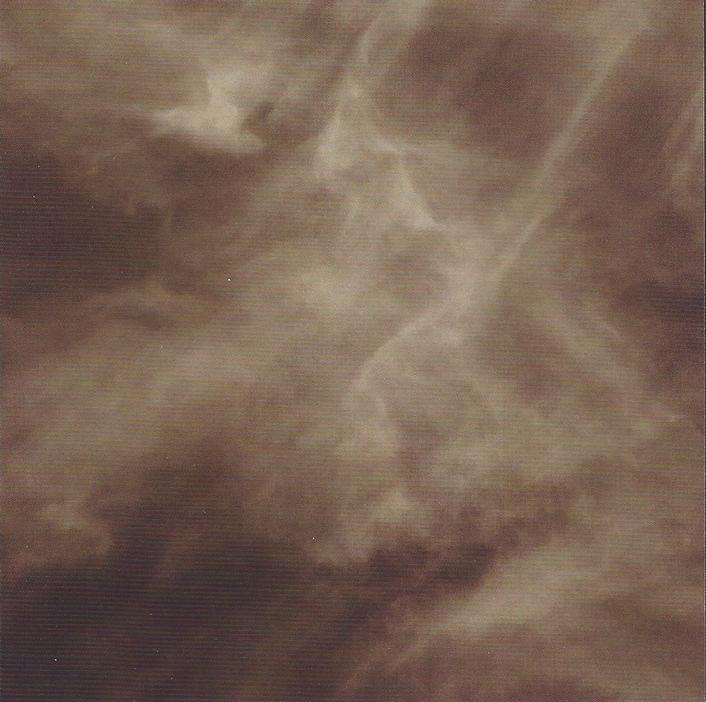 Amongst Myselves is the solo project of Australian composer and musician Steve Roberts and The Past Is Another Country is his 7th album since 1999.
Amongst Myselves is the solo project of Australian composer and musician Steve Roberts and The Past Is Another Country is his 7th album since 1999.
 Homemade music veteran Bret Hart’s December Sketches is a collection of loop experimentation tunes where he uses a pedalboard configuration to send his instruments and electronics before being fed into the looper.
Homemade music veteran Bret Hart’s December Sketches is a collection of loop experimentation tunes where he uses a pedalboard configuration to send his instruments and electronics before being fed into the looper.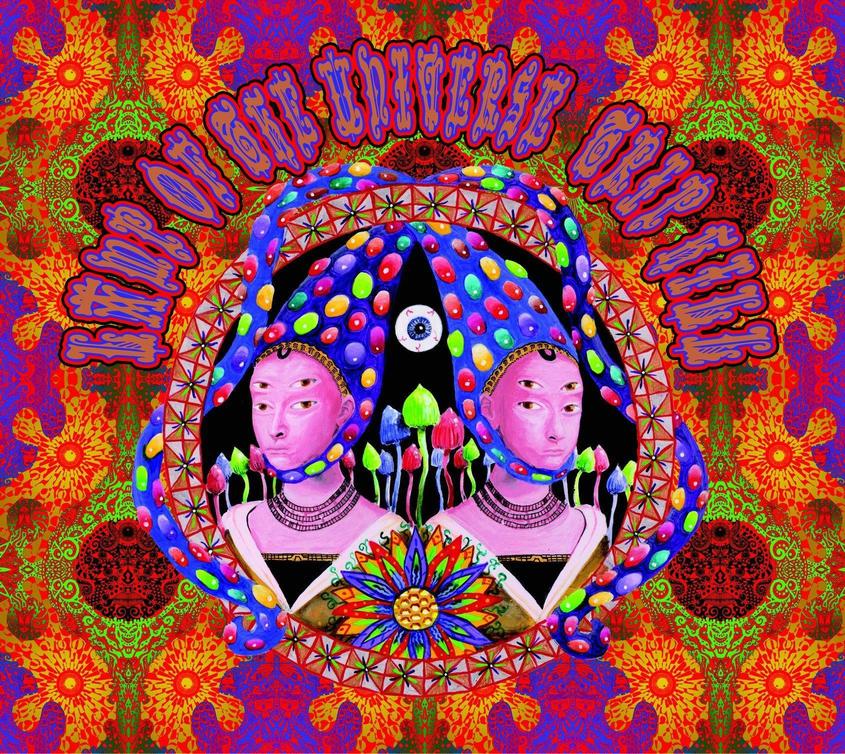 The excellent German label Clostridium Records has released a nifty split album featuring Lamp Of The Universe and an Italian one-man project I’ve never heard of called Trip Hill. Trip Hill is headed up by Fabrizio Cecchi, who according to discogs.com has sporadically released albums as Trip Hill since 1998.
The excellent German label Clostridium Records has released a nifty split album featuring Lamp Of The Universe and an Italian one-man project I’ve never heard of called Trip Hill. Trip Hill is headed up by Fabrizio Cecchi, who according to discogs.com has sporadically released albums as Trip Hill since 1998. If, Bwana is the long lived project of Al Margolis, revered by many homemade musicians as the godfather of American cassette culture. Margolis’ Sound of Pig label (which later morphed into Pogus Productions) was a showcase for many experimental music artists throughout the 1980s-90s.
If, Bwana is the long lived project of Al Margolis, revered by many homemade musicians as the godfather of American cassette culture. Margolis’ Sound of Pig label (which later morphed into Pogus Productions) was a showcase for many experimental music artists throughout the 1980s-90s. A.J. Kaufmann – “Stoned Gypsy Wanderer” (Kendra Steiner Editions 2014, CDR/DL)
A.J. Kaufmann – “Stoned Gypsy Wanderer” (Kendra Steiner Editions 2014, CDR/DL)
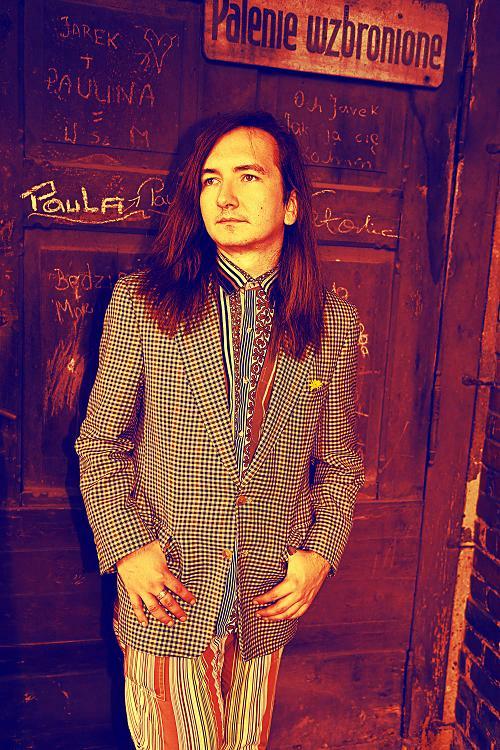
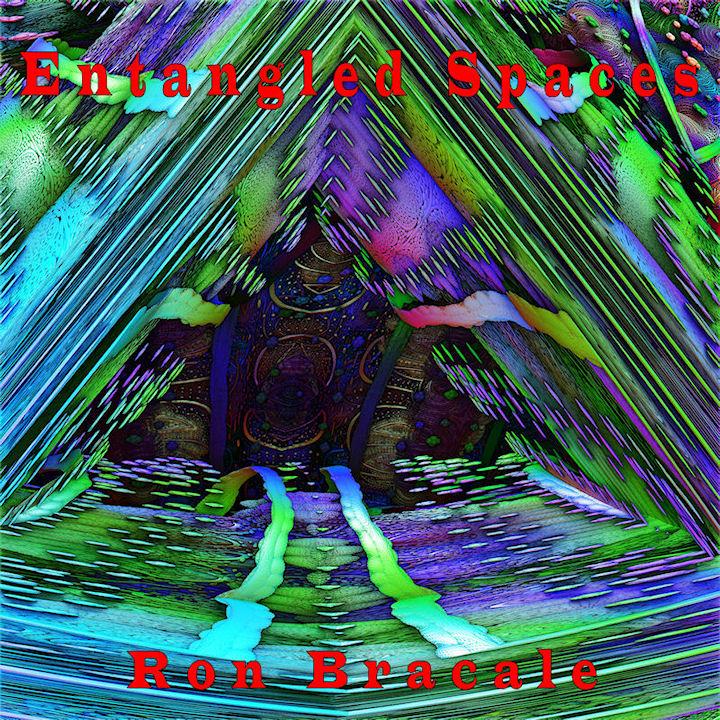 Ron Bracale is a Cleveland based musician who plays a variety of flutes, having studied under various Jazz, Indian Raga, Classical, Blues and Rock instructors. Combining his flutes with synthesizers, Bracale creates music intended to promote world peace and healing.
Ron Bracale is a Cleveland based musician who plays a variety of flutes, having studied under various Jazz, Indian Raga, Classical, Blues and Rock instructors. Combining his flutes with synthesizers, Bracale creates music intended to promote world peace and healing.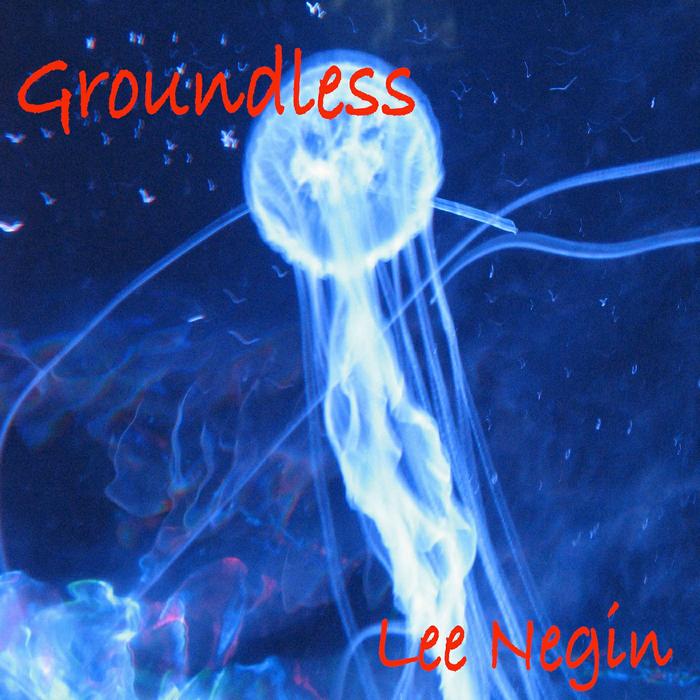 Now based in Seoul, South Korea, Lee Negin was part of the 1980s Detroit techno scene. My introduction to Negin’s music was just months ago with another 2014 release: The Cheeze Chronicles: Volume V, a “technopera” that I described as “a space crazed blend of 80s New Wave, Neue Neutsche Welle, Kraftwerk and The Residents” (
Now based in Seoul, South Korea, Lee Negin was part of the 1980s Detroit techno scene. My introduction to Negin’s music was just months ago with another 2014 release: The Cheeze Chronicles: Volume V, a “technopera” that I described as “a space crazed blend of 80s New Wave, Neue Neutsche Welle, Kraftwerk and The Residents” ( I’ve been following guitarist Jason Kesselring’s work since the early Aural Innovation days, starting with the late great Minneapolis based Space/Psych/Kraut Rock band Skye Klad (who I also got to see live at the 2000 Strange Daze Space Rock Festival). Kesselring went solo with Satyrswitch, a vehicle to explore his interest in Jansch/Graham/Basho guitar styles and other acoustic music. Now based in North Dakota, Kesselring’s solo project of recent years has been Comets ov Cupid, which across his first three albums covered textural Ambient/Drone explorations and blistering Space Rock for the alchemically inclined.
I’ve been following guitarist Jason Kesselring’s work since the early Aural Innovation days, starting with the late great Minneapolis based Space/Psych/Kraut Rock band Skye Klad (who I also got to see live at the 2000 Strange Daze Space Rock Festival). Kesselring went solo with Satyrswitch, a vehicle to explore his interest in Jansch/Graham/Basho guitar styles and other acoustic music. Now based in North Dakota, Kesselring’s solo project of recent years has been Comets ov Cupid, which across his first three albums covered textural Ambient/Drone explorations and blistering Space Rock for the alchemically inclined. 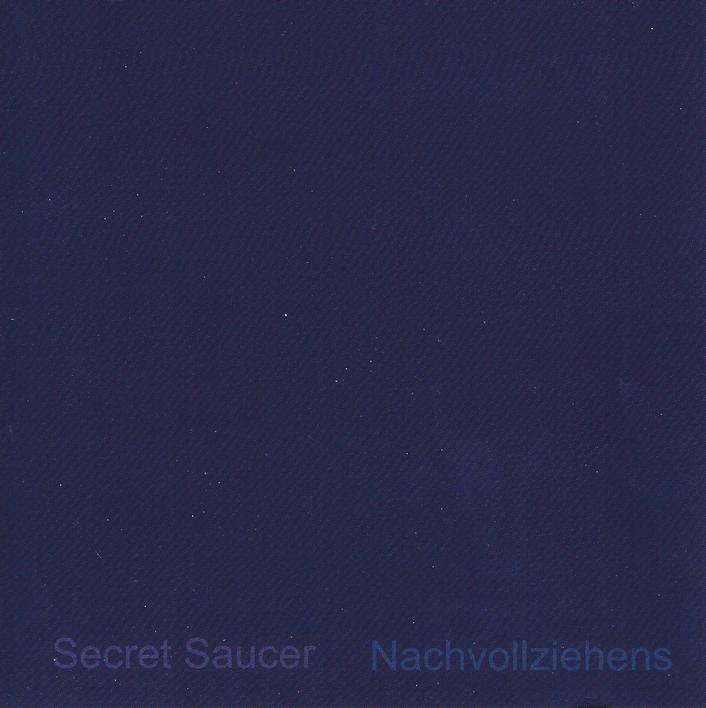 Secret Saucer have at various times included members of Quarkspace, Architectural Metaphor, Star Nation, Sun Machine and others, being a collective of musicians from some of best Space Rock bands in the northeastern U.S. Nachvollziehens is their latest album and compiles remixed tracks from earlier albums, live in the studio tracks, and a previously unreleased song.
Secret Saucer have at various times included members of Quarkspace, Architectural Metaphor, Star Nation, Sun Machine and others, being a collective of musicians from some of best Space Rock bands in the northeastern U.S. Nachvollziehens is their latest album and compiles remixed tracks from earlier albums, live in the studio tracks, and a previously unreleased song.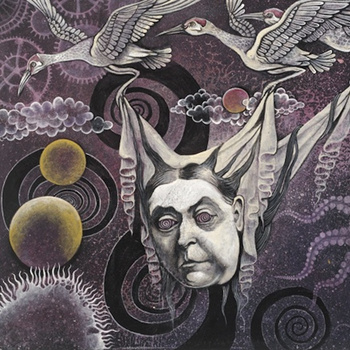 If Syd Barrett were an 80s Goth he would be Edward Ka-Spel of the Legendary Pink Dots. At first the album did not strike me as anything great, but after several spins the album both nods toward the 25 year old Legendary Pink Dots classic LP The Maria Dimension (which is getting a 5LP box treatment from the Soleilmoon label very soon) and 80s Edward Ka-Spel albums like his China Doll series of LPs from the 80s. The vocals are cryptic and dark and gothic, a strange piano, odd finger drums and the intro to the first song called Limburgia has a Indian raga like beat. All the 8 tracks flow like a single sequence of interworked songs, though they are all different and separate tracks. Here we do not have the Noise sculpture and abstract Industrial splatter like on Dream Loops or Ghost Logik from a few years ago, nor the electronic madness of Edward’s Dream Logik trilogy. The third track, The Border Beyond, has ominous police sirens in the distance closing in and leaving again, fading in and out again like a spectre on the “force”. Edward sings very low key. It takes either great concentration to follow his lyrics, or you can do like me, imagine the darkwave ramblings of a 80s Goth Syd Barrett, though as a lyricist Edward and Syd do not share any similarity, just the voice and the beatnik whimsy style. I ordered the double disc Deluxe set and got a second CD with two tracks, one song is etched as vinyl on the CDR and plays perfectly on my turntable while the other song is there next to it as a digital track, and they both share the same side of the disc. Those two tracks are very analogue and Victorian style forms of musics, maybe after a little Opium and Absinthe…
If Syd Barrett were an 80s Goth he would be Edward Ka-Spel of the Legendary Pink Dots. At first the album did not strike me as anything great, but after several spins the album both nods toward the 25 year old Legendary Pink Dots classic LP The Maria Dimension (which is getting a 5LP box treatment from the Soleilmoon label very soon) and 80s Edward Ka-Spel albums like his China Doll series of LPs from the 80s. The vocals are cryptic and dark and gothic, a strange piano, odd finger drums and the intro to the first song called Limburgia has a Indian raga like beat. All the 8 tracks flow like a single sequence of interworked songs, though they are all different and separate tracks. Here we do not have the Noise sculpture and abstract Industrial splatter like on Dream Loops or Ghost Logik from a few years ago, nor the electronic madness of Edward’s Dream Logik trilogy. The third track, The Border Beyond, has ominous police sirens in the distance closing in and leaving again, fading in and out again like a spectre on the “force”. Edward sings very low key. It takes either great concentration to follow his lyrics, or you can do like me, imagine the darkwave ramblings of a 80s Goth Syd Barrett, though as a lyricist Edward and Syd do not share any similarity, just the voice and the beatnik whimsy style. I ordered the double disc Deluxe set and got a second CD with two tracks, one song is etched as vinyl on the CDR and plays perfectly on my turntable while the other song is there next to it as a digital track, and they both share the same side of the disc. Those two tracks are very analogue and Victorian style forms of musics, maybe after a little Opium and Absinthe…